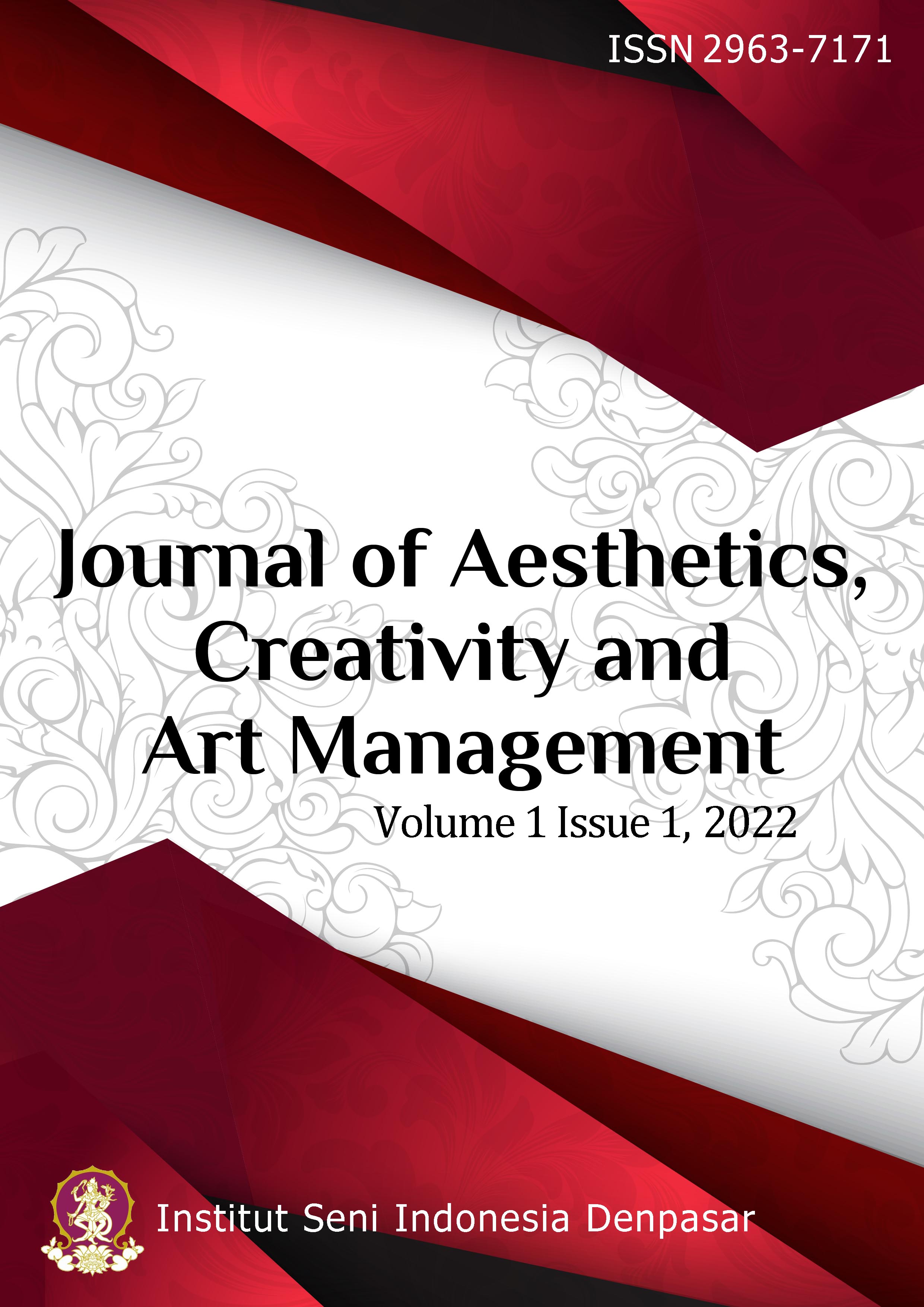“Nga-wayang”: A New Dance Creation from a Globalized Sociocultural Environment
DOI:
https://doi.org/10.59997/jacam.v1i1.1593Keywords:
“Nga-wayang”, new creation dance, gatot kaca, balinese shadow puppetAbstract
This scientific article aims to discuss a new dance creation entitled “Nga-wayang”, whose creation idea depicts the character Gatot Kaca in a two-dimensional wayang kulit show. No one has worked on a dance that was transformed from a two-dimensional wayang kulit performance into a new three-dimensional dance creation. The creation of the “Nga-wayang” dance uses qualitative methods. The creation process is carried out in stages: ngarencana, nuasen, makalin, nelesin, and ngebah. The search for ideas was carried out using participatory observation techniques and in-depth interviews with related parties. The deepening of the character of Gatot Kaca's character is carried out through library research and discography. The process of creating this new dance creation is carried out using transformation theory and aesthetic theory. The cultivation of this work of art has resulted in a new dance creation entitled “Nga-wayang”. As a new dance creation, “Nga-wayang” is presented full of new ideas based on the influence of the art ecosystem in the influence of globalization in terms of poses, variety of movements, techniques, dynamics, tempo, and level play based on multimedia such as LCD projectors, LED lights, and smoke. The process of composing this dance has been carried out since this material was developed as a final choreography class assignment, the presentation of which has been continuously refined. “Nga-wayang” is a new dance creation that departs from the experience of the cultural environment in the era of globalization, namely the ecosystem as an art reinforcement.
References
Amir, H. M. A. (1997). Nilai-Nilai Etis Dalam Wayang. Jakarta: Pustaka Sinar Harapan
Bandem, I. M., et al. (1983). Gerak Tari Bali. Denpasar: ASTI Denpasar.
Dewi, Ernita. 2012. Transformasi Sosial dan Nilai Agama, Jurnal Substantia, Vol. 14, No. 1, April.113-114.
Dibia, I. W. (2003). Bergerak Menurut Kata Hati; Metode Baru Dalam Mencipta
Dibia, I. W. (2012). Geliat Seni Pertunjukan Bali. Denpasar: Buka Arti.
Dibia, I. W. (2013). Puspasari: Seni Tari Bali. Denpasar: UPT Penerbitan ISI Denpasar.
Djelantik, A. A. M. (2008). Estetika Sebuah Pengantar. Jakarta: Mayarakat Seni
Guritno, P. (1988). Wayang Kebudayaan Indonesia Dan Pancasila. Jakarta: Universitas Indonesia Press.
Martono, H. (2012). Ruang Pertunjukan dan Berkesenian. Yogyakarta. Cipta Media.
Mertosedono, A. S. H. (1992). Sejarah Wayang. Jakarta: Dahara Prize
Mulyono, S. 1979. Wayang dan Karakter Manusia. Jakarta: PT. Gunung Pertunjukan Indonesia.
Murgiyanto. (1992). Koreografi. Jakarta. Departemen Pendidikan dan Kebudayaan.
Sedyawati, E. (1984). Tari. Jakarta: PT. Pustaka Jaya.
Hadi, Y. S. (1996). Aspek-Aspek Dasar Koreografi Kelompok.
Suteja, I. K.. (2018). Catur Asrama Pendekatan Spiritual Masyarakat Bali Dalam Sebuah Karya Tari. Yogyakarta: Paramita.
Tari (terjemahan dari Moving From Within: A New Method Dance Making karya Alma M. Hawkins). Jakarta: Ford Foundation dan Masyarakat Seni


